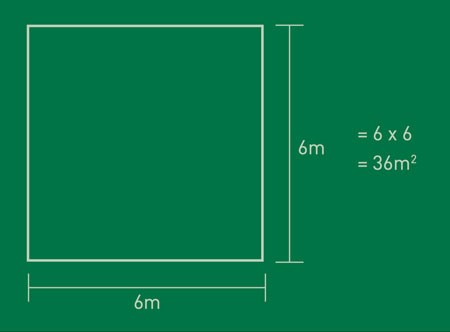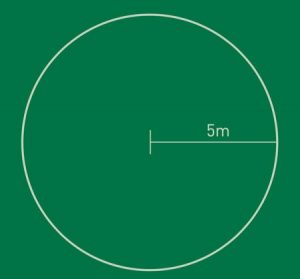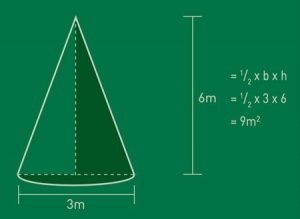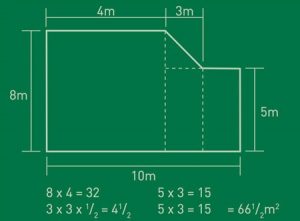How to Treat Pythium Root Rot in Your Lawn
Pythium Root Rot is a fungal affliction that affects both warm and cool season grasses, and is particularly active during the Australian Spring and Summer months where warm ...

When buying your new lawn use our simple guide OR our Easy Turf Calculator (below) to calculate how much you will need.
Any supplier of turf, will also assist you in helping calculate the amount of rolls or slabs you need to cover a specified area – but here are some easy methods to follow.
 Square and Rectangle. Calculating the area for a square or rectangle is very simple. Get the overall width and the overall length of the square or rectangle, multiply the two and the result is the area for the square or rectangle. For example, a Square: 6m (wide) x 6m (length) = 36m2 For example, a Rectangle: 6m (wide) x 4m (length) = 24m2
Square and Rectangle. Calculating the area for a square or rectangle is very simple. Get the overall width and the overall length of the square or rectangle, multiply the two and the result is the area for the square or rectangle. For example, a Square: 6m (wide) x 6m (length) = 36m2 For example, a Rectangle: 6m (wide) x 4m (length) = 24m2
 Circle. To calculate the amount of lawn you need in square metres (m2), measure the radius of the circle and multiple the (radius x radius) x 3.14. For example, radius of 5m (5 x 5) x 3.14 = 78.5m2
Circle. To calculate the amount of lawn you need in square metres (m2), measure the radius of the circle and multiple the (radius x radius) x 3.14. For example, radius of 5m (5 x 5) x 3.14 = 78.5m2
 Triangle. Calculating the area for a triangle is done by getting the overall width and the overall length of the triangle, multiply the two and divide by half and the result is the area for the triangle.
Triangle. Calculating the area for a triangle is done by getting the overall width and the overall length of the triangle, multiply the two and divide by half and the result is the area for the triangle.
 Shapes. The area of a shape can be determined by simply breaking the shape into a set of squares, rectangles or triangles. Find the individual area and add them to give you the total area of the shape.
Shapes. The area of a shape can be determined by simply breaking the shape into a set of squares, rectangles or triangles. Find the individual area and add them to give you the total area of the shape.
Enter in the dimensions of your yard in our Easy Turf Calculator (below) to calculate the m2 you may need for your yard. If you need to add multiple shapes click on Add a section and an additional calculation will be included.
To get pricing info for your desired turf variety, visit our Find Your Turf page or get 3 quotes from your local grower today.